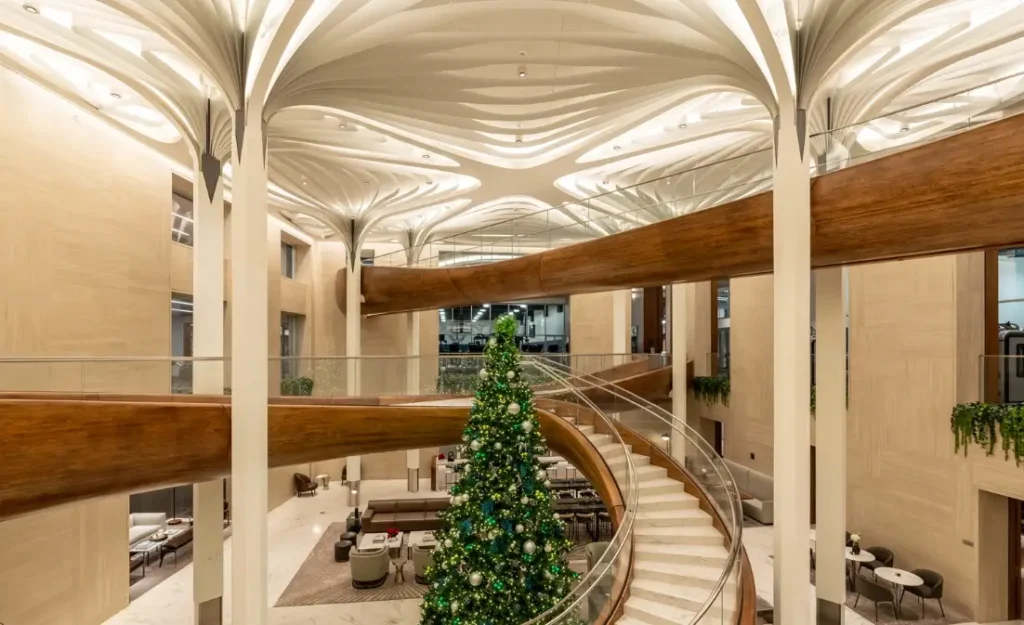When we talk about parametric design, we’re referring to a powerful, transformative process that revolutionizes how we think about creating and manipulating complex geometries. The word itself may sound highly technical, but at its core, parametric design is all about letting geometric elements react to predefined parameters and rules, allowing for dynamic and responsive models. Think of it as giving the design process a brain—one that makes adjustments based on input, feedback, and changing conditions. It’s no surprise that parametric design has become a game-changer in architecture, product, engineering, and beyond.
In the traditional design world, processes are typically linear. You draw a line, it stays where you drew it, and if you want to modify the design, you have to go back and manually adjust every detail. But with parametric design, you can set up relationships between different components of your concept idea. Changing one element automatically alters the others. It’s like a smart system that maintains the integrity of your design while allowing for nearly limitless flexibility. Parametric design liberates us from rigid structures and enables the creation of intricate, innovative forms that might have been inconceivable just a few decades ago.

What Is Parametric Design, and How Does It Work?
To grasp the full potential of parametric design, it’s essential to understand how it operates. At its core, parametric design relies on algorithms and parameters—variables that can change and adapt based on input data. These parameters are the building blocks that define relationships between different elements of a model. The magic happens when changes in these parameters automatically update the entire design, allowing for fluid and flexible adjustments.
The 5 top tools of parametric design
Imagine designing a building where you need to change the height of one floor. In a traditional system, you’d have to manually adjust every single element affected by that change—doors, windows, walls, etc. In a environment, you simply update the height, and the software automatically recalculates everything. The walls stretch, the windows reposition, and the doors adjust. All of this happens because the elements in a parametric design model are linked through relationships defined by parameters.
The algorithmic nature of parametric design also allows for explorations that were once too labor-intensive to pursue. Architects can quickly run through dozens—or even hundreds—of iterations, experimenting with different variables to find the optimal solution. Whether it’s adjusting a building’s shape for wind resistance or altering a facade for better sunlight exposure, parametric design allows architects and engineers to fine-tune every detail without starting from scratch each time.
How Parametric Design Differs from Traditional Design Methods
To truly appreciate parametric design, it’s essential to compare it to traditional work methods. In traditional design, whether you’re working on a building, a product, or any other complex structure, the process is largely manual and static. You have a set of drawings or blueprints, and each time you need to make a change, you go back and manually alter the design. This method can be cumbersome and often leads to inconsistencies, especially when dealing with highly complex geometries.
With parametric design, however, the process becomes fluid and dynamic. Instead of manually adjusting each element, you define relationships between them, allowing the system to automatically update everything based on changes to the parameters. For example, if you’re designing a chair using traditional methods, and you decide the legs need to be longer, you have to manually adjust the legs, the seat, and possibly even the backrest to maintain balance. In a parametric design system, you simply adjust the leg height parameter, and the entire chair adjusts accordingly—ensuring that everything stays in proportion.
The contrast between the two approaches is stark. Traditional work relies on human effort and time, while parametric design leverages algorithms to save both, resulting in designs that are more efficient, adaptable, and optimized.
The Role of Algorithmic Processes in Parametric Design
At the heart of parametric design lies its reliance on algorithmic processes. An algorithm is essentially a set of instructions that tells the computer how to perform a task. In the context of parametric rules, these algorithms are used to generate and manipulate complex geometries based on the parameters defined by the designer. The beauty of these algorithms is that they allow for endless possibilities, limited only by the creativity and constraints set by the designer.
Take, for example, the famous Guggenheim Museum Bilbao by Frank Gehry, an iconic building known for its intricate, undulating forms. While traditional design methods might have struggled to bring such a vision to life, simulations modelling made it possible to generate and refine the building’s complex curves. Algorithms allowed Gehry’s team to explore multiple iterations of the design, tweaking parameters like curvature, spacing, and structural integrity until they found the perfect balance between form and function.
But it’s not just about complex shapes. Parametric design also allows for the optimization of other variables like energy efficiency, material usage, and cost. By setting up parameters related to these factors, designers can quickly test different scenarios and identify the most efficient solution. For example, an architect designing a skyscraper might use parametric algorithms to minimize the amount of steel needed while ensuring the building remains structurally sound.
Real-World Applications of Parametric Design: Pushing Boundaries
The use of parametric design has led to some of the most innovative and visually striking buildings in the world. It’s hard to talk about architectural design process without mentioning the Heydar Aliyev Center by Zaha Hadid Architects. This architectural marvel features sweeping, fluid lines that create a sense of movement and dynamism. The building’s complex geometry was made possible by parametric modelling, which allowed the architects to explore multiple forms and adjust parameters to achieve the final shape. The result is a building that feels like it’s constantly in motion, despite being made of solid materials.

Another impressive example is The Shard in London. While it may not be as curvaceous as the Heydar Aliyev Center, its design was optimized through parametric design tools to address concerns like wind resistance and energy efficiency. The building’s tapering form, which narrows as it rises, was developed by adjusting parameters related to structural stability and wind loads. By using parametric tools, the architects were able to fine-tune the building’s architectural conception, ensuring that it met both aesthetic and functional requirements.
In product design, parametric design has proven to be equally transformative. Consider the case of Nike, which has used parametric tools to create customized shoes based on individual foot shapes. By inputting parameters like foot length, width, and arch height, Nike can generate a perfectly fitted shoe for each customer. This not only enhances comfort but also improves performance—a perfect example of how parametric design can be used to tailor products to individual needs.
Parametric Design in Architecture and Beyond
While architecture is often the most visible application of parametric design, its influence extends far beyond buildings. In industries like aerospace, automotive design, and fashion, prototype tools are used to create highly customized and optimized products. For example, in the aerospace industry, innovative design structures is used to develop lightweight, structurally sound components that can withstand extreme conditions. By adjusting parameters related to material thickness, shape, and load-bearing capacity, engineers can fine-tune designs to achieve the best possible performance.
In the automotive industry, companies like BMW and Tesla use parametric tools to streamline the conception process, reducing the time it takes to bring new models to market. Parametric algorithms allow these companies to test different configurations and materials in a virtual environment, ensuring that the final product is both efficient and aesthetically pleasing.
Even in fashion, parametric design is making waves. Designers like Iris van Herpen use parametric algorithms to create intricate, futuristic garments that push the boundaries of what’s possible with traditional conception methods. By adjusting parameters related to fabric, texture, and shape, van Herpen is able to generate garments that seem almost otherworldly—blurring the line between fashion and art.
The Advantages of Parametric Design: Speed, Precision, and Innovation
The benefits of parametric design are numerous, but three key advantages stand out: speed, precision, and innovation.
First, parametric program allows for rapid iteration. In a traditional design process, making changes can be time-consuming and labor-intensive. With parametric design, however, adjustments can be made quickly and easily by modifying the relevant parameters. This speeds up the design process and allows designers to explore multiple options before settling on a final solution.
Second, parametric design offers unparalleled precision. Because the relationships between elements are defined by algorithms, every change is calculated with mathematical accuracy. This reduces the risk of errors and ensures that the final design is as precise as possible.
Finally, parametric design fosters innovation by allowing designers to experiment with forms and structures that would be difficult—or even impossible—to create using traditional methods. By breaking free from the constraints of manual design, architects, engineers, and product designers can push the boundaries of what’s possible, creating bold, innovative solutions to complex problems.
Personal Anecdote: The Power of Parametric Design in Practice
I’ll never forget the first time I used parametric design on a project. I was working on a complex facade for a mixed-use building, and the design called for a series of interlocking panels that needed to respond to changes in light throughout the day. At first, the process seemed daunting—how could we possibly ensure that every panel would adjust perfectly without spending weeks manually tweaking each one?
Then we turned to parametric design. By setting up a series of parameters related to sunlight exposure, we were able to create a responsive facade that adjusted automatically based on the position of the sun. As we changed the parameters, the entire design updated in real-time, allowing us to test multiple iterations in just a few hours. What once felt like an insurmountable challenge became an exciting opportunity to explore new possibilities.
Conclusion: Parametric Design as the Future of Innovation
In a world where the complexity of forms continues to grow, parametric design offers a powerful tool for mastering intricate geometries and pushing the boundaries of what’s possible. From architecture to aerospace, fashion to product, parametric tools are transforming the way we think about creating and optimizing complex forms.
By leveraging the power of algorithms and parameters, designers can rapidly iterate through multiple options, increase precision, and streamline workflows—all while maintaining the flexibility to adapt to changing conditions. As the examples of the Guggenheim Museum Bilbao, Heydar Aliyev Center, and The Shard show, parametric modelling process is not just a tool for the future—it’s already shaping the world we live in.
For any designer looking to tackle complex geometries, parametric design is an invaluable tool that opens up new worlds of possibility. Whether you’re designing a skyscraper, a shoe, or a spacecraft, parametric tools give you the power to innovate, iterate, and create in ways that were once unimaginable.



